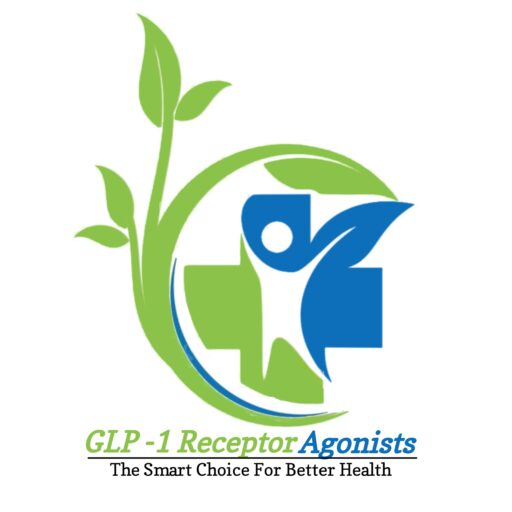
GLP-1 stands for Glucagon-Like Peptide-1, a hormone that’s kind of like an unsung hero in your body. It plays a big role in managing blood sugar levels, especially after you eat. It signals your pancreas to release insulin and tells your liver to stop making sugar when it’s not needed.
Now, why do we care about GLP-1 agonists? These are drugs that mimic the actions of the natural GLP-1 hormone. They stick around longer in your body compared to the natural hormone, ensuring your blood sugar doesn’t spike too high after meals. Imagine them as a gentle reminder to your pancreas and liver to keep things balanced.
So, how exactly do they work? GLP-1 agonists attach to GLP-1 receptors, mainly found in the pancreas. This binding boosts insulin secretion, but only when your blood sugar is rising. This smart action helps reduce the risk of hypoglycemia, a fancy term for when your blood sugar levels drop too low.
One more cool thing about GLP-1 agonists is their impact on appetite. They slow down the emptying of your stomach, making you feel full longer, which can help with weight management. It’s like having a natural portion controller!
In terms of glucose control, these agonists can be a game-changer, especially for folks with Type 2 diabetes. They tackle multiple issues at once—lowering blood sugar, helping with weight control, and even lowering the risk of certain heart diseases. It’s a holistic approach that can significantly improve quality of life for many.
Spotlight on GLP-1 Agonist Examples
When it comes to GLP-1 agonists, there are some standout medicines making waves in diabetes treatment. Liraglutide is one of the most well-known. It’s often branded as Victoza, among other names, and it’s been around the block in helping manage Type 2 diabetes. Liraglutide not only aids in blood sugar control but also brings weight loss benefits, which is a big plus for many patients.
Another prominent name is Exenatide, which you might see on shelves as Byetta or Bydureon. It works similarly, with a longer-acting option for those needing sustained control over their sugar levels. It’s available in different forms—some for daily use, others you only need weekly—and that flexibility can be real handy depending on lifestyle and preference.
GLP-1 agonists generally come in injectable forms, but don’t fret if needles aren’t your thing. There’s research and development going into oral options and more convenient delivery methods. Having options means you and your healthcare provider can find what best suits your life.
While we’re talking examples, Dulaglutide, also known by the brand name Trulicity, deserves a mention too. It’s another weekly treatment option that many find convenient, providing consistent blood sugar management without daily reminders. This one is particularly user-friendly for those balancing busy schedules.
While these drugs pack a punch in the diabetes-care toolkit, it’s essential to have a chat with your healthcare provider. They’ll help assess the right one for you. Remember, it’s not just about picking a drug; it’s about aligning treatment with your health goals and lifestyle. You’re the driver in your health journey, and GLP-1 agonists are valuable co-pilots!
An Overview of Current GLP-1 Agonists
Taking a look at the current lineup of GLP-1 agonists, it’s clear that there’s been serious progress. Besides Liraglutide, Exenatide, and Dulaglutide we’ve already touched on, you’ll find plenty of other options such as Semaglutide, branded as Ozempic or Rybelsus. Semaglutide has gained popularity due to its dual weekly injection and daily oral tablet form, making flexibility its calling card.
Then there’s Albiglutide, known as Tanzeum, and Lixisenatide which goes by Adlyxin. Both contribute to the diversity of GLP-1 agonists, each with their own dosing schedules and profiles, giving folks more ways to find their ideal fit. Each option has unique pharmacokinetics, meaning they act differently in your body, and these differences can affect personal choice based on how you respond.
Let’s not overlook the newcomers, like Efpeglenatide which is inching closer to market availability. It’s part of the fresh wave of GLP-1 agonists promising even better benefits in terms of efficacy and user experience. Keeping an eye on emerging treatments is always a good idea, whether you’re a patient or healthcare professional. It never hurts to stay informed as new solutions become available.
Why’s this range of GLP-1 agonists so exciting? It’s about fitting treatment seamlessly into life routines. Having a variety in how often you take a medication or how it affects you means more tailored care, an important factor in managing long-term conditions like diabetes.
Choosing the right GLP-1 agonist isn’t just a random pick. It’s about finding what aligns with your health goals—whether that’s better blood sugar control, weight management, or reducing cardiovascular risks. This makes a conversation with your healthcare provider super crucial. Your treatment plan should feel like a custom suit; it fits just right.
Decoding Brand Names of GLP-1 Agonists
When faced with a wall of brand names at the pharmacy, it can feel like navigating a maze. Knowing what each of these names represents is a huge help in understanding the treatment landscape. In the world of GLP-1 agonists, brand names like Victoza, Trulicity, and Ozempic are pretty household for those familiar with diabetes treatment.
Each brand name comes with its own little story. Victoza, for example, is associated with helping in weight management aside from blood sugar control. On the other hand, Ozempic has been making headlines due to its option as an oral tablet, Rybelsus, giving a break from injections which is a novelty in this category.
Branding also reflects marketing strategies aimed at improving patient compliance. Trulicity’s simple once-a-week shot is designed to fit effortlessly into a person’s weekly routine, providing convenience which can play a key role in staying on track with treatment. After all, if a medication is easier to take, you’re more likely to stick with it.
It’s also worth mentioning how some brand names align with specific lifestyles or health goals. For instance, I found certain brands focus more on cardiovascular benefits while others spotlight weight management. Your choice might boil down to which additional benefits you’re aiming to reap alongside blood sugar control.
Given this buffet of brands and options, having a chat with your healthcare provider is vital in picking the ‘just right’ option. Understanding what each brand offers beyond their primary purpose can spark a more comprehensive conversation about your health priorities. Being informed sets a strong foundation for making those important health decisions.
Comparative Insights: GLP-1 vs. GLP-2
GLP-1 and GLP-2 might sound like peas in a pod, but they’ve got quite different gigs in your body. While GLP-1 is all about managing blood sugar and appetite, GLP-2 takes a different path, focusing primarily on gut health. Think of GLP-2 as the gut’s little helper that enhances nutrient absorption and supports intestinal growth.
Digging into the pharmacology, GLP-1 agonists are designed to tap into the body’s natural insulin regulation mechanisms, assisting particularly with diabetes management. GLP-2, meanwhile, is more geared towards conditions related to the intestines, possibly prescribed for those with short bowel syndrome.
Understanding these differences is crucial, especially if your health team discusses treatments involving these peptides. While they’re part of the same peptide family, their therapeutic targets vary significantly. GLP-1’s clinical uses revolve around metabolic conditions, whereas GLP-2 focuses more on gastrointestinal functions.
The distinction in their applications underscores the importance of having tailored conversations with healthcare providers. If a treatment involves both GLP-1 or GLP-2, it’s likely addressing separate health concerns. Knowing which peptide is best suited for your specific condition can help in making the right therapeutic decision.
If your provider ever mentions GLP-1 in tandem with GLP-2, understanding the separate roles can make discussions clearer. It’s about maximizing therapeutic outcomes by harnessing the right tool for the job. Knowledge here empowers you to participate actively in your treatment planning, carving a path that aligns with your healthcare goals.
Why GLP-1 Agonists Matter: A Glimpse into the Future
GLP-1 agonists are more than just another class of medication; they’re a beacon of hope for many living with Type 2 diabetes. These drugs aren’t just about managing blood sugar levels—they’re about improving overall health outcomes. By helping control weight and potentially reducing cardiovascular risks, they provide a multifaceted approach to wellness.
The science and innovation don’t stop here. As we move forward, the developments in GLP-1 therapies hint at even greater benefits. Think about a world where these medications are accessible to more people, with even fewer side effects and more delivery options beyond injections. Research is actively exploring these areas, aiming to transform the treatment landscape.
Looking ahead, it’s exciting to see how GLP-1 agonists might be applied beyond diabetes. There’s talk of potential roles in obesity management, given their appetite-lowering effects, and even in neurological concerns, since they’re part of a broader discussion around metabolic health.
The real excitement lies in how these medications can improve quality of life. Proper management of diabetes doesn’t just mean better numbers during checkups—it often translates to more energy, less worry about complications, and more freedom in everyday life. It’s about living life with fewer limits and more possibilities.
Staying informed and engaged with the latest in GLP-1 agonist research can prepare you for what’s next. Whether you’re a patient, a caregiver, or a healthcare professional, awareness of these advancements ensures readiness for the medical breakthroughs just around the corner. As technology and medicine evolve, keeping up with these changes empowers you to make informed decisions for a healthier future.



